When I try to receive the USART signal with my Silicon Labs CP210x USB to UART Bridge. The only thing I receive is:
<0><0><0><0><0><0><0><0><0><0><0><0><0><0><0><0><0><0><0><0><0><0><0><0><0><0><0><0><0><0><0><0><0><0> etc
I got the right settings selected: baud rate: 9600 data bits: 8 parity: none stop bits: 1
I use a ATmega128A3U. The test_LED (see code below) on port E pin 0 is working. I used a oscilloscope to check the uart signal. See picture here: https://i.stack.imgur.com/MX0O0.jpg
Does someone know a solution for this?
Does anyone know how to fix a framing error? (My UART software is giving this error)
CODE:
#define F_CPU (32000000UL) // CPU clock speed
#include <avr/io.h>
#include <util/delay.h>
void USARTF0_init() {
USARTF0_BAUDCTRLB = 0; //BSCALE is 0
USARTF0_BAUDCTRLA = 0xCF; //BSEL is 207
USARTF0_CTRLA = 0; //Disable interrupts
USARTF0_CTRLC = USART_CHSIZE_8BIT_gc; //8 data bits, no parity and 1 stop bit
USARTF0_CTRLB = USART_TXEN_bm | USART_RXEN_bm; // //Enable receive,transmit and high speed mode
PORTF_OUTSET = PIN3_bm; // Port F pin 3 as TX
PORTF_DIRSET = PIN3_bm; // TX pin as output
PORTF_OUTCLR = PIN2_bm; // Port F pin 2 as RX
PORTF_DIRCLR = PIN2_bm; // RX pin as input
}
void sendChar(char c) {
while( !(USARTF0_STATUS & USART_DREIF_bm) ); //Wait until DATA buffer is empty
USARTF0_DATA = c;
}
void sendString(char *text) {
while(*text) {
sendChar(*text++);
}
}
int main(void) {
USARTF0_init();
PORTE.DIRSET = PIN0_bm; // make port E pin 0 output (test_LED)
while(1)
{
_delay_ms(10);
sendString("Hello World!\n\r");
PORTE.OUTTGL = PIN0_bm; // test_LED Toggle
}
}
Code source: http://morf.lv/modules.php?name=tutorials&lasit=29
